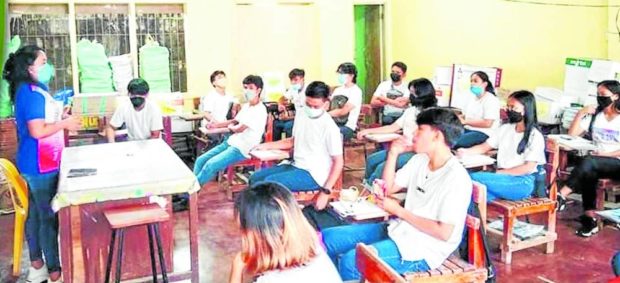
Class in Carcar City in Cebu
MANILA, Philippines — Albay Rep. Joey Salceda has suggested the use of “Taglish” (Tagalog and English) in nonlanguage subjects, particularly Science, Technology, Engineering and Mathematics (STEM), and the nourishment of learners to address the country’s 91-percent learning poverty rate.
“I think it’s time to admit that, whether we like it or not, the language of the media, of national conversations and of the digital space in the Philippines, is decisively Taglish. Most homes intersperse English and Filipino words freely. People converse and more importantly, think in Taglish,” he said.
Salceda, chair of the House committee on ways and means, has expressed grave concern that the figures in the 2022 World Bank Learning Poverty Report were from 2019 or before the COVID-19 pandemic.
Learning poverty is defined as the share of children who cannot read a simple text with comprehension by age 10. “Among Asean (Association of Southeast Asian Nations) countries, we beat only Laos,” he pointed out.
—JEANNEETTE I. ANDRADE
RELATED STORIES
Teaching in English may make PH education deteriorate more – ACT
Marcos wants to reexamine medium of instruction in schools
DepEd urged to reinforce English as medium of instruction
Filipino pushed as main medium of instruction